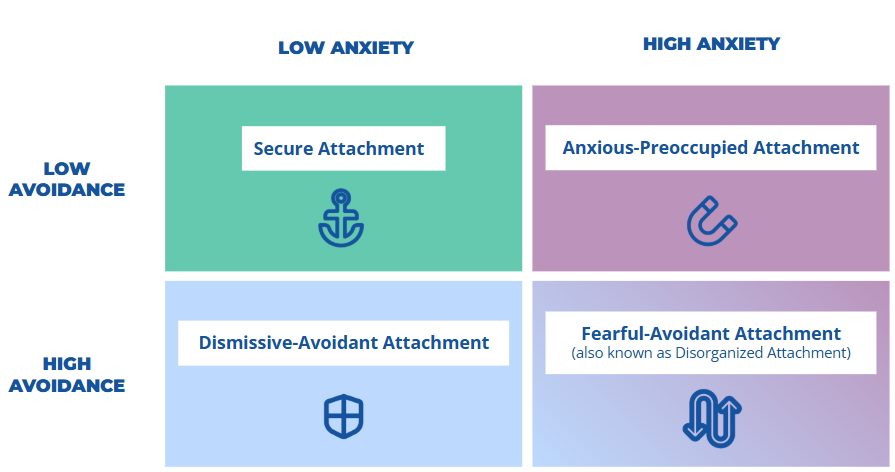The roots of attachment theory can be traced back to the pioneering work of psychologists such as John Bowlby and Mary Ainsworth in the mid-20th century, whose research illuminated the crucial role that early relationships play in shaping our emotional and psychological development. Over time, it became increasingly evident that attachment patterns established in childhood continue to influence individuals into adulthood, impacting relationships, self-esteem, and overall well-being.
People who are insecurely attached often struggle with building healthy relationships in work, family, and love. The insecure attachment styles include Anxious-Preoccupied, Dismissive-Avoidant, and Fearful-Avoidant or Disorganized Attachment. People can lean slightly or fully into insecure attachment styles and the research suggests that some people are more fluid in their ability to form attachments and can be secure with some and not others, whereas other people only form other insecure attachment styles or minimal attachments with no loving bond at all.
The problem: Most educators and parents lack formal training in attachment styles which is a substantial part of students’ socioemotional development.
The solution: Attachment Matters, LLC provides research-backed trainings in the form of virtual and in person events such as professional development training for educators and webinars and workshops for parents and students.



